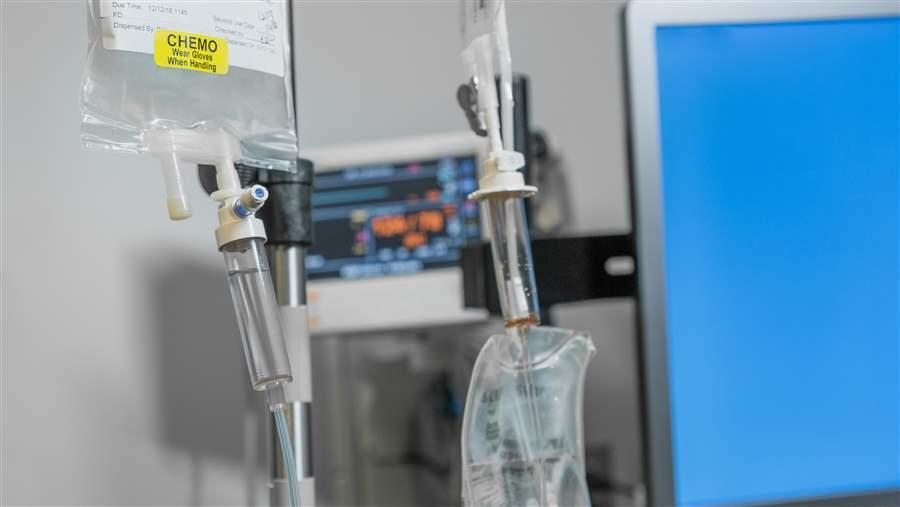This Policy Option Could Reduce Medicare Part B Drug Costs
Incorporating cost into national coverage determination process could lower spending
Many proposed policies to reduce Medicare drug spending would require new legislation, but it’s possible the program could achieve some savings with an existing approach known as the national coverage determination (NCD) process.
In general, the Medicare Part B program provides reimbursement for all Food and Drug Administration-approved, physician-administered drugs. However, Medicare can choose to evaluate whether an item or service is “reasonable and necessary” through the NCD process, which aims to assess whether benefits of a treatment outweigh potential harms. Based on this evaluation, Medicare can choose to restrict or deny coverage.
To date, NCD decisions have largely considered the benefits and risks of a treatment to patients, and not its cost. However, Medicare could use its current authority, through guidance or formal rule-making, to expand the definition of “reasonable and necessary” to take into account a treatment’s cost to the program. Medicare could then limit or reject coverage of a drug if the cost is deemed too high. Even if an NCD was not developed for all drugs, the threat of one could deter manufacturers from setting high prices.
One possible approach for incorporating drug prices into an NCD is a requirement that Medicare beneficiaries attempt therapy with a cheaper but clinically comparable drug before they could be treated with a higher-cost alternative. In fact, this coverage policy is commonly applied to oral and self-injectable medications in public and private programs, including Medicare Part D.
While incorporating the cost of a drug into the NCD process would not allow the government to directly negotiate Part B drug prices—which by law are set at 104.3 percent of each drug’s respective average sales price (ASP)—this strategy may indirectly lower drug prices for Medicare. If the Centers for Medicare & Medicaid Services were to release new rules or guidance on how it evaluates the cost or cost-effectiveness of a drug, private payers might adopt a similar approach as well. Unlike Medicare, they would have the ability to negotiate with drug companies for lower prices. Doing so could create additional downward pressure on drug prices from private payers. Because Medicare Part B drug payment rates are based on prices paid in the private sector, Medicare would see a downstream reduction in these prices as well.
Several factors would determine potential Medicare savings, including which Part B drugs were evaluated using the NCD process, the criteria used to assess cost, changes in utilization due to restricted coverage for some drugs, and the extent to which incorporating drug prices into the NCD process might deter manufacturers from charging higher prices.
New Part B coverage policies that take into account drug prices, and potentially the cost-effectiveness of a drug, would likely raise concerns about the potential impact on patient access. Therefore, Medicare may also need to assess all available treatment options for a disease or condition when considering coverage of a drug. The program would have to carefully evaluate the clinical nuances of how a drug therapy may have different levels of effectiveness across different patient populations as well as potential differences in benefits and risks for different treatments. However, if informed by high-quality clinical evidence and input from patients, this approach has the potential to lower spending on drugs in Medicare Part B while also maintaining patient access to appropriate care.
Allan Coukell directs health programs at The Pew Charitable Trusts, and Chuck Shih and Ian Reynolds work on its drug spending research initiative.











